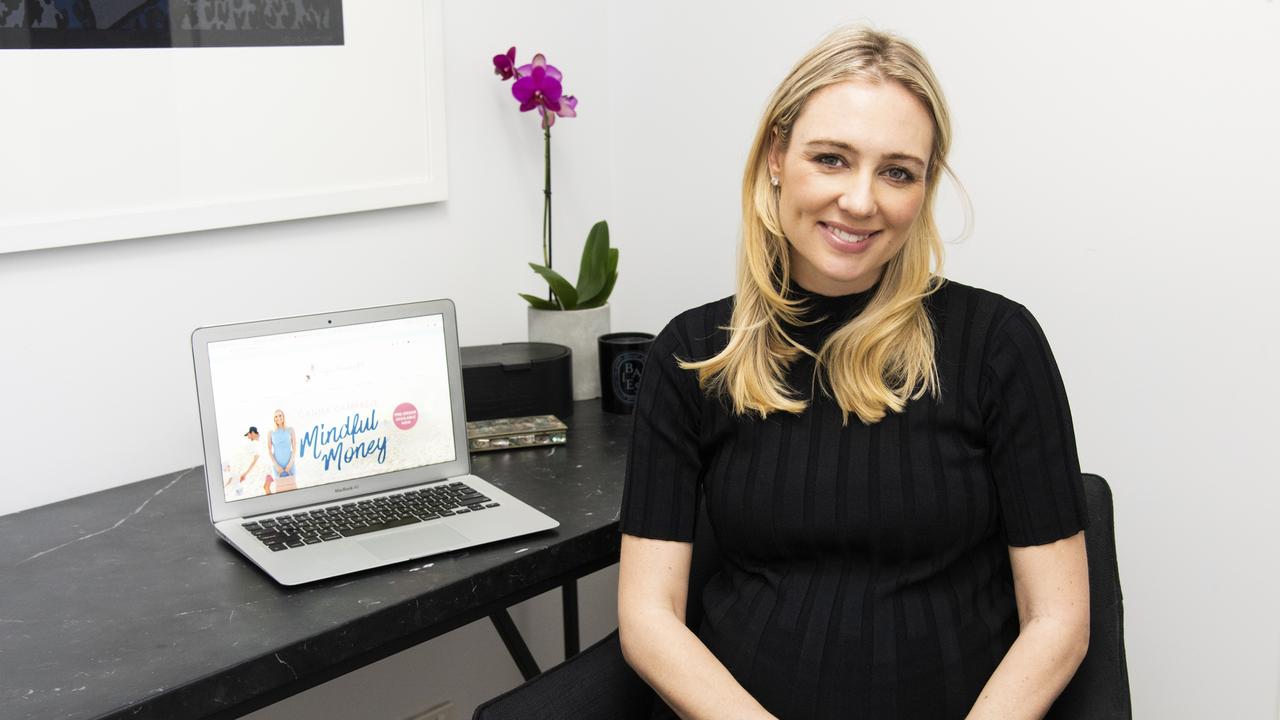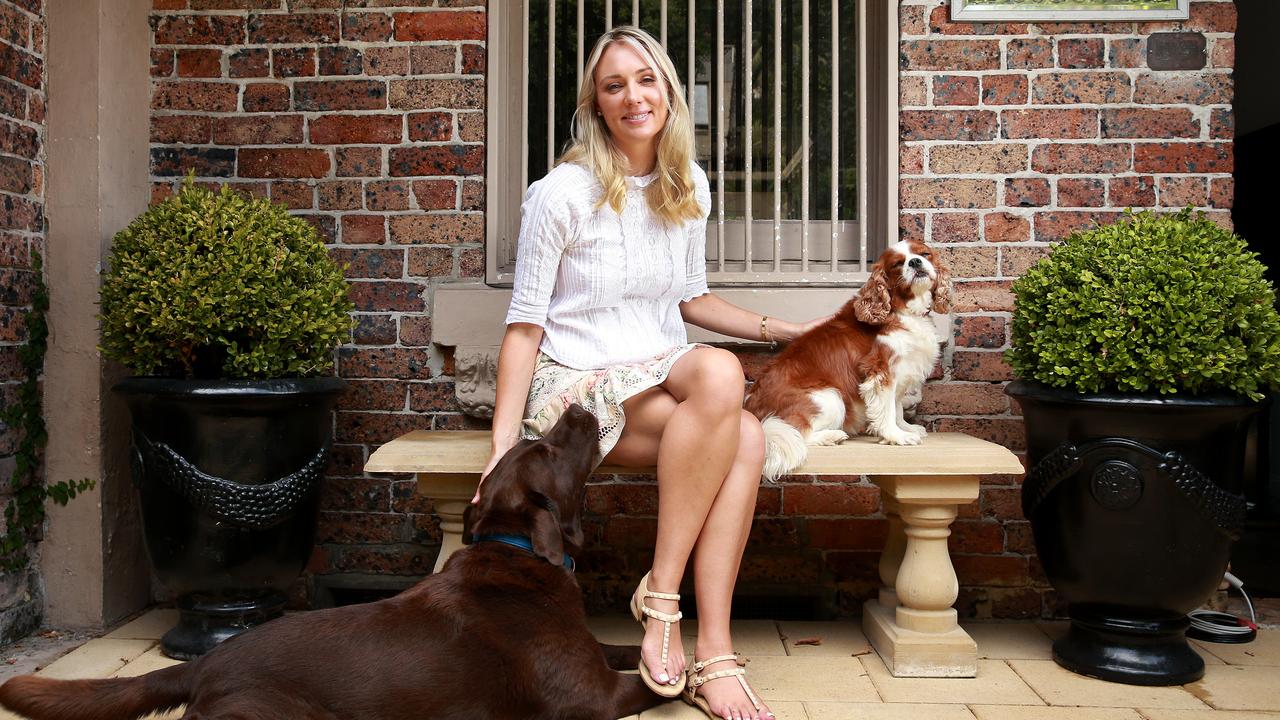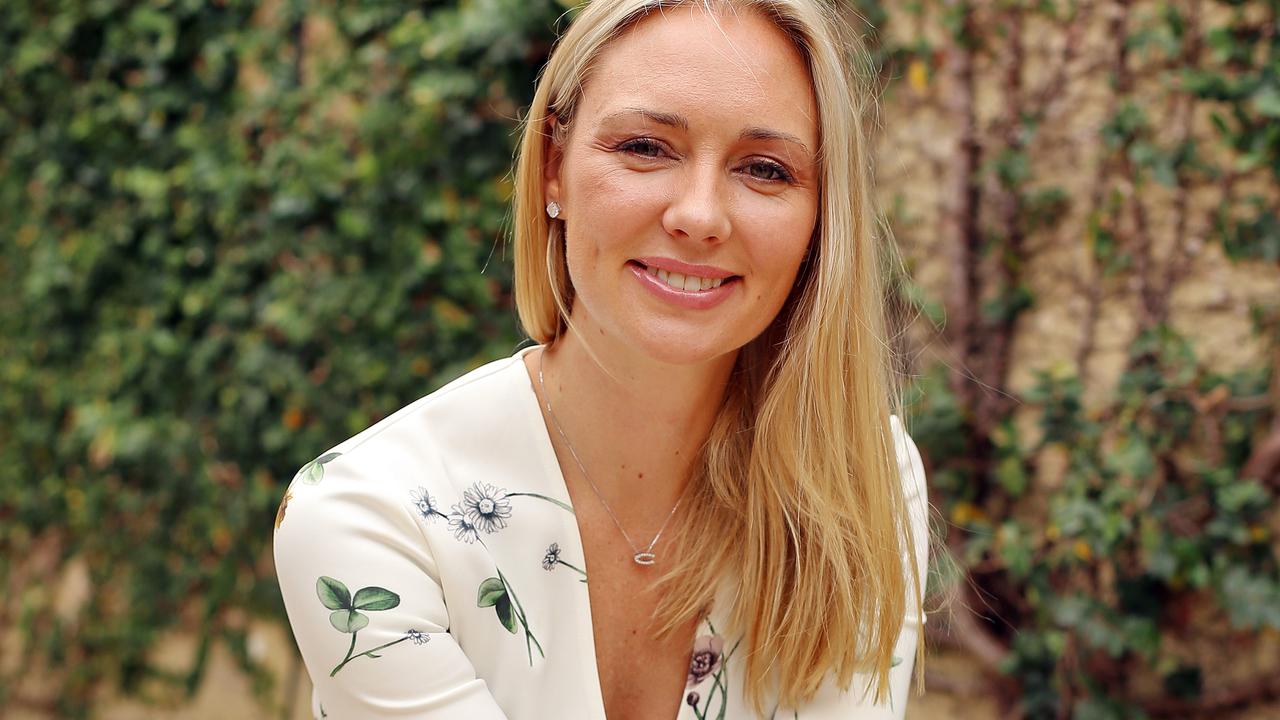SugarMamma financial adviser Canna Campbell reveals the four bank accounts everyone should have
This Sydney mum and financial guru says if you aren’t using this easy money trick you could be going down a slippery path of debt.
Financial adviser Canna Campbell, who shares money advice on YouTube channel SugarMamma TV, has shared an all-access pass to her own personal financial system to help Aussies save.
The savings guru said it all starts with your bank accounts, suggesting everyone should split their finances into four separate financial buckets.
The Sydney mum, who has written financial advice book Mindful Money, explained managing cashflow with a “foolproof banking ritual” of allocating money into separate bank accounts helps prioritise financial goals and avoid debt.

Having cash flow split up into different accounts enables complete control over your savings and expenses while not being reliant on credit cards for emergencies.
“There are four bank accounts that you need and ideally all these bank accounts should be with the one bank account. The reason why I recommend this is because when you log into your bank account you can see your entire cash flow situation on the one screen,” she explained said in a YouTube video.
The four accounts are for everyday spending, emergency funds, lifestyle goals and long-term investments.
“My four account system works well in that it helps you manage your short-term expenses but also allows you to stock pile for the larger ad hoc or once off bills that can catch us by surprise,” she told news.com.au.
RELATED: How much should you have in your emergency fund?
EVERYDAY SAVINGS
The first account is your everyday savings account that you get paid into which is where you allocate your expenses for the month.
“The money that is in this account will pay for all your daily, weekly, fortnightly and monthly expenses,” Canna explains.
She lists monthly expenses like mortgage repayments, mobile phone bills, gym memberships as well as new clothes, hair cuts and even getting nails done.
The other three accounts are online savings accounts and an emergency fund where the only way to access the money is through internet banking. This can help stop the temptation to use this money for quick purchases.
It’s also possible to reap higher interest from these savings accounts compared to everyday transaction accounts. Canna also points out that online savings accounts have lower fees.
“Most of us get paid on a regular basis, such as fortnightly or monthly, but our bills don’t always come with the same routine – such as Christmas time, rego and car insurance renewal, quarterly utilities bills, etc. This method helps smooth out your cash flow and help ensure that you hit your bills on time,” she told news.com.au.
RELATED: How much money should you have in superannuation by age

EMERGENCY FUND AND ANNUAL EXPENSES
The second account is the financial float and emergency money account that Canna calls the “life plus $10,000 emergency money account”.
This account should always have $10,000 for emergencies plus an additional $3000 for annual expenses that seem to come out of the blue.
“Quite often what makes it hard or throws a spanner in the works when it comes to sticking to a budget and managing our cash flow is when we haven’t properly planned ahead for those quarterly or biannual or annual expenses that can catch us by surprise,” Canna explained.
This includes planning and preparing for Christmas time or when car rego or insurance pops up annually or an annual dentist appointment.
“It’s important that you stockpile and prepare for these financial events,” she advised.
Having at least $13,000 in that account at any given time “stops you leaning towards a credit card or borrowing money to get you through tough times”.
“If I ever tap in to my second account, I always replenish it,” she explained.
“This method helps you stay out of debt as you don’t need to reach for a credit card when you get stuck,” she told news.com.au.
LIFESTYLE GOAL ACCOUNT
“The third account, which is a little more exciting, is your lifestyle goal account, such as a holiday, saving up for a new car, maybe a new handbag, maybe a new laptop – something that’s important to you, something that sparks joy in your life,” she said.
Canna said adding money to this account on a regular basis when you get paid gives you “delayed gratification” on the things you want and can “enjoy it guilt free”.
“When you do this, you enjoy that item so much more because you’ve done it with such intention, respect, responsibility and you enjoy it guilt free,” Canna said.
“If I’m having a really tough week or a bad day, seeing that money in my holiday savings account reminds me I can go on a holiday soon and I’m not going to come home in any type of debt whatsoever,” she added.

FINANCIAL GOAL ACCOUNT
The fourth account is your financial goal account which is for longer-term investments.
“For me that is my savings to invest account. This is where I park regular savings that I know I’m going to be investing,” Canna explained.
“I don’t invest that money until I’m ready to invest and I know exactly what I’m doing with that money and it’s aligned with my financial goals,’ she added.
“Australians need to not only prioritise savings but investing as well,” she told news.com.au.
HOW TO MANAGE THE ACCOUNTS
When it comes to working out how much money to put into each of these accounts, Canna said first you need to work out your monthly expenses.
“You’re going to have to tweak things and change things depending on what’s going on in your life. It’s not set and forget,” Canna said.
You will get paid into your first account and you would leave the money you need for expenses in there while you transfer the rest to the second account.
For someone earning $6000 a month after tax, $3000 can be left in the account for monthly expenses while the other $3000 can be transferred to the second account.
Once $13,000 has been reached in that account, you can start adding in money into the lifestyle goals and investing accounts.
Canna said she would continue to transfer $1000 into her emergency fund, $1000 into the lifestyle fund and $1000 into the financial goal account.
“The reason why I recommend having four accounts is there’s not too many but there’s not too little, it’s the perfect balance between naughty and nice,” she said.
“I know that every month I can top each of these accounts up and watch my financial wealth grow and watch my financial stress levels fall.”
She added: “Once you’ve done this, a couple of months pass and you start to see all of these four accounts stockpiling, you’ll realise you’re not struggling to get towards the end of your pay cycle where you’re running out of money.”



